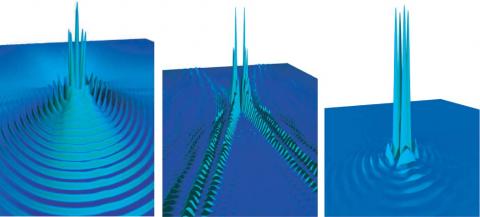 Bardeen, Cooper and Schrieffer developed a simple microscopic description of the superconducting ground states in terms of Cooper pairs and phonon mediation. The isotropic s-wave description for superconductivity predicted that the maximum superconducting transition temperature (Tc) was below the boiling point of nitrogen (77K).
Bardeen, Cooper and Schrieffer developed a simple microscopic description of the superconducting ground states in terms of Cooper pairs and phonon mediation. The isotropic s-wave description for superconductivity predicted that the maximum superconducting transition temperature (Tc) was below the boiling point of nitrogen (77K).
However, views changed upon the discovery by Bednorz and Müller of the first member of the copper oxide family of superconductors with Tc up to 160K, twice the boiling point of liquid nitrogen. This unexpectedly high Tc forced theorists to explore modifications to the basic superconductivity theory.
This has led to the theoretical framework of p-wave spin-triplet states and d-wave spin-singlet states. When considering the probability of finding a quasiparticle of a Cooper-pair state in real space, p-waves have two-fold symmetry and d-waves have four-fold symmetry respectively i.e. they are anisotropic. The d-wave states are most interesting since their probability distribution is strongly peaked with nearest neighbour sites implying a small Cooper-pair and consequentially a high Tc.
